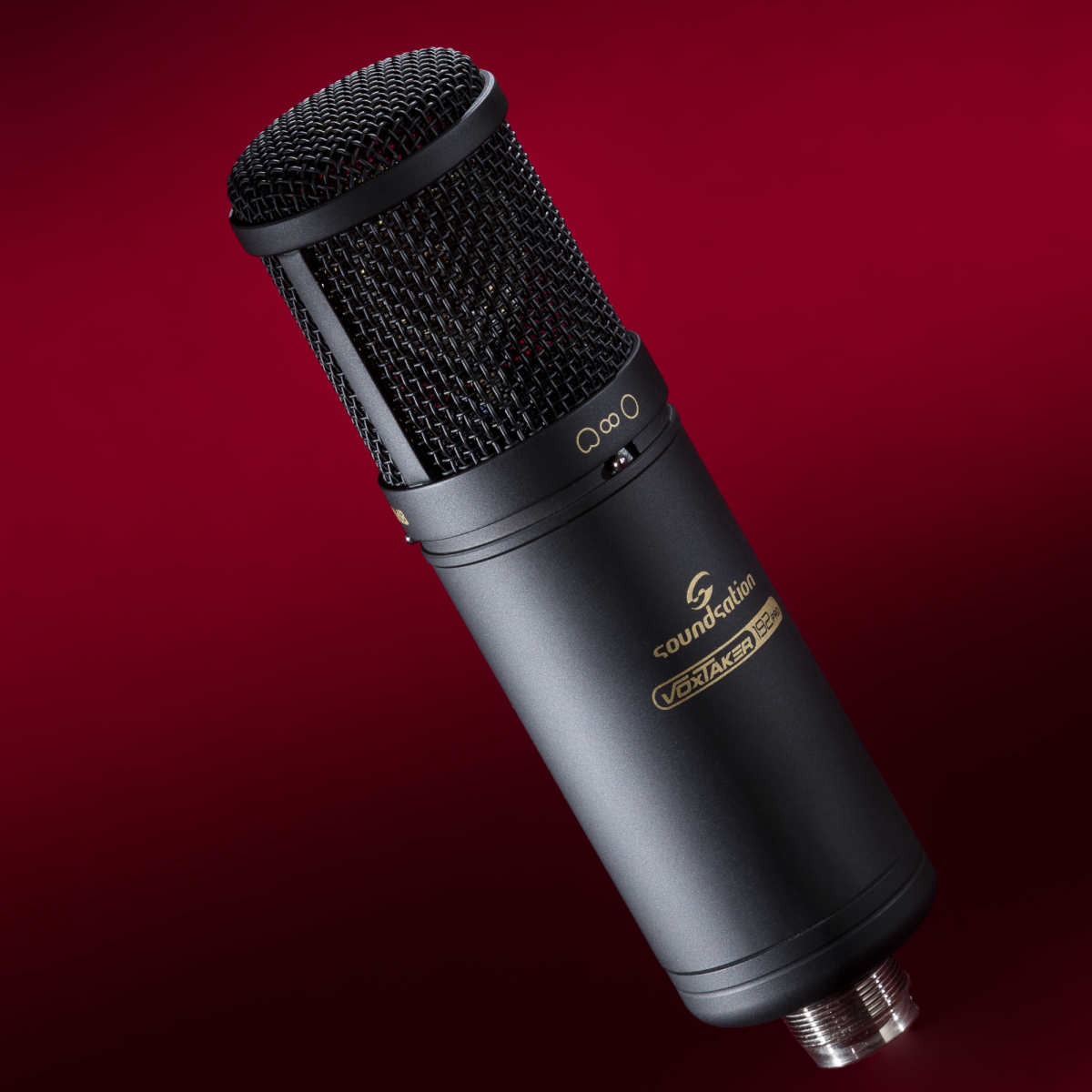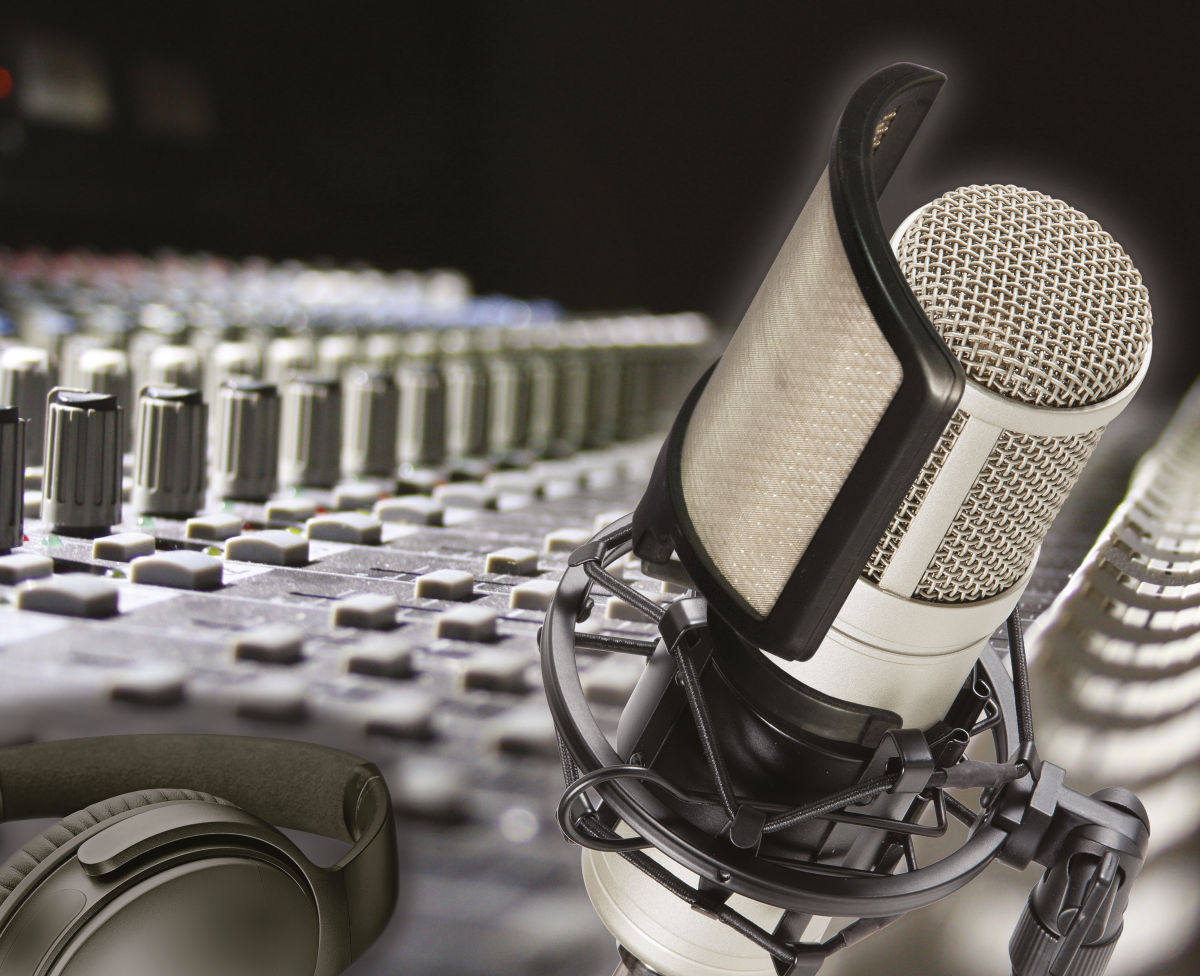Welcome to a new series of three articles dedicated to choosing the right microphone. We will guide you through types and models available, whilst offering a critical examination based on their applications, keeping the information simple and easy to understand. In this first episode, we deal with studio and broadcast microphones.
Today we touch on another topic that is
very dear to those who deal with audio - the choice of the microphone. For
some, this is almost a sacred decision, so how do you go about choosing the
right microphone? Which models are most suitable for recording vocals, guitar
or acoustic instruments in general? And again,
how much budget should I allocate for a professional microphone?
Before answering these questions, it is
necessary to provide an overview of the suitable microphones. In our case, we
will base this overview on the context of use, rather than on the type of
microphone.
On closer inspection, in addition to the
typical manuals for individual microphones, the internet is flooded with
articles that deal with the types of microphones and comparisons of their
technical aspects. In this article, we will focus ourselves on giving you some
interesting links and hints specific to their use.
The classification of microphones is often made according to the technology adopted - primarily
Condenser, Dynamic, Valve and Ribbon types. Additionally, they are classified
by their polar pattern – primarily Cardioid, Hypercardioid, Omni, Figure of 8
and Shotgun.
At this point, it’s best to face the
decision from a practical point of view.
We have therefore identified two distinct
categories. However, as we will later find, some models may very well be used
effectively for both applications.
The two situations differ mainly in the
“environment”; in which the microphones are used. On the one hand we have an
ideal environment, created specifically for microphone recording, such as the
recording studio. On the other hand we have a live situation, where we cannot enjoy
the advantages of a soundproof room and the comfort that a recording studio
offers. Broadcasting is a situation that sits somewhat in the middle, but still
shares more controlled similarities with a recording studio.

Some rules that always apply…
In the field of audio and acoustic physics
in general, some basic rules that are dictated by acoustic physics always
apply. A classic example refers to speakers. We know that there are tweeters
and woofers and that an 18” woofer will be suitable for reproducing low
frequencies, but would be unable to reproduce high frequencies, and vice versa.
This example is trivial, but it clarifies how physical laws impose limits.
Similar situations occur in microphones, and a crucial mechanical element in
their operation is the diaphragm or membrane. This is the element that, when
exposed to impacting acoustic pressure, moves to produce an electrical signal.
Diaphragm and mass The membrane - also
called the
diaphragm - can be more or less large and equally more or less sensitive to
incoming sound. Based on these characteristics, these microphone types are
variably suited for certain instruments or contexts.
Typically, dynamic microphones have a more
durable membrane, which makes them more suitable for less “delicate” situations
such as live vocal microphones. Condensers on the other hand, feature a thinner
and lighter membrane. This typically does not have enough mass to generate a sufficient
signal and therefore need a special current (Phantom Power) to amplify the
signal.
Here, in fact, we are faced with the first
major differentiation, between passive (or dynamic) and active (or condenser)
microphones. The shape and size of the diaphragms largely define the attitude
of the microphone to pick up sounds. Generally speaking, a light and small
membrane is usually more sensitive and reactive, making it capable of capturing
the spectrum of frequencies with definition and care, especially high frequencies
that have a shorter wavelength and less impact force.
A heavier and larger membrane, on the
other hand, will have less speed and accuracy, however will be able to
withstand significant acoustic pressure much better and will certainly have
greater durability.
The recording studio: an ideal environment
…
What differentiates a recording studio from a location of a live
concert?
The first factor is that the recording
studio, be it a home studio or a more professionally equipped studio, is a
closed environment. This means it is sheltered from bad weather and humidity
(hopefully!), and specifically designed and built for recording, ideally with
acoustic treatment. Because of being such an ideal environment, it is therefore
more practical and
effective to use a wider spectrum of
microphone models, some intrinsically more delicate and difficult to use in a
live situation.
In the studio, each instrument can be
played individually and edited with care, whilst live recording of the whole
band simultaneously inevitably generates interactions and re-enters the
microphones at a relative distance.
In the studio, when possible, you can also
have the “luxury”; of placing multiple microphones to record the same
instrument, so as to choose the best combinations and find the right balance
for optimal sound. In live situations, however, we often follow the rule that
“less is more”.
We’ll discuss microphones for recording further in our second and third
articles in this series.

Which studio microphones?
The general premise is that, in a
recording studio, the microphones are less likely to be incorrectly handled
and, for obvious reasons, are handled with more care when they are. Because of
this, any type and model can be used.
On the other hand, we once again have to
deal with our old friend (or enemy), the budget. We aim to be objective and
realistic in this report and therefore we will make our selections factoring in
the number of microphones we are looking to invest in.
If we are just looking for a single
microphone capable of doing a little bit of everything, then the choice is
practically made for us. Here we would look for a nice all-round condenser -
capable of recording acoustic instruments and voices efficiently and
effectively. This is a situation where research and discovery is recommended,
as there are many microphones
on the market from lesser-known
manufacturers that can return great results.
For around 300/400 euros, you can purchase
a decent microphone, potentially with selectable polar patterns.
This means that the user is able to focus
or widen the angle of recording, as well as apply a frequency cut- off filter.
A shock mount will usually be included, an accessory that is essential.
A clear example of this is the Lewit LTC60 microphone, where the polar pattern can be easily selected from the
microphone’s front panel.
If instead we decide to opt for a second
microphone, we come to a crossroad: choose another identical capacitor (often
available in matched pairs so that the sound is as similar as possible), or opt
for a classic dynamic. This dynamic may be less sensitive and perhaps less
“refined”, but often more suitable for recording percussive instruments and, in
general, acoustic and electrical
instruments with higher emissions (for example a snare drum, trumpet or guitar
cabinet).
For just 50-70 euros, you can purchase a
super-reliable and performance dynamic microphone. But don’t be fooled or lured
in by “brand appeal”, as on closer inspection we can tell you that many models,
inside, are very similar to one other, if not identical...
It might be that two or even three
microphones aren’t enough? Maybe
you want to record a full drum-kit to
obtain more refined sounds and nuances? In this situation, you can opt for a
complete microphone set to pick up the drums, of which there are many models to
choose from.
These are available at a variety of
price-points, from tube models providing warmer and velvety sounds, to splendid
ribbon microphones - beautiful for medium-high frequencies in
their characteristic of having a very
sensitive and precise reel made just like that of a tape.
Ready to choose?
The world of microphones is one that every
artist involved in music will explore at one time or another. Moreover, the
microphone is the first link between our instrument (including the voice) and
the rest of the signal chain. It is precisely for this reason that a microphone
should be chosen after a hands-on test, particularly if primarily being used
for vocals.
Here, we have to find our sound, something
that cannot be expressed pruely in words or technical data. Remember that
although a lot can be done during editing and mixing, it is impossible to
perfect a sound that starts off with a flawed recording.
In this article we have addressed the
issue from a different angle to the norm, choosing to avoid the usual
pseudo philosophical distinctions between
the types of microphones, polar patterns and other factors. After all, you can
already find a great deal of further info in the links that we have inserted in
the text. Instead, we are focused on giving advice and
clear, useful practices.
So, on the crucial question: how does one
ultimately choose a home recording microphone? What factors should we consider,
assuming we only have to choose one?
●
diaphragm type
●
versatility (possibility to choose polar diagrams)
●
high transient resistance
The condenser type is certainly the most
suitable for the first and only microphone, above all because it is so
versatile in its usage, even more so if featuring an assignable polar diagram.
Likewise, a microphone that can withstand
more subtle transients well, perhaps at the expense (though not always) of the
sensitivity of the membrane itself. However, for an extra 70 euros or so, it is
not such a bad idea to invest in a second robust dynamic microphone as well!
Provided by https://www.encoreagency.net/
